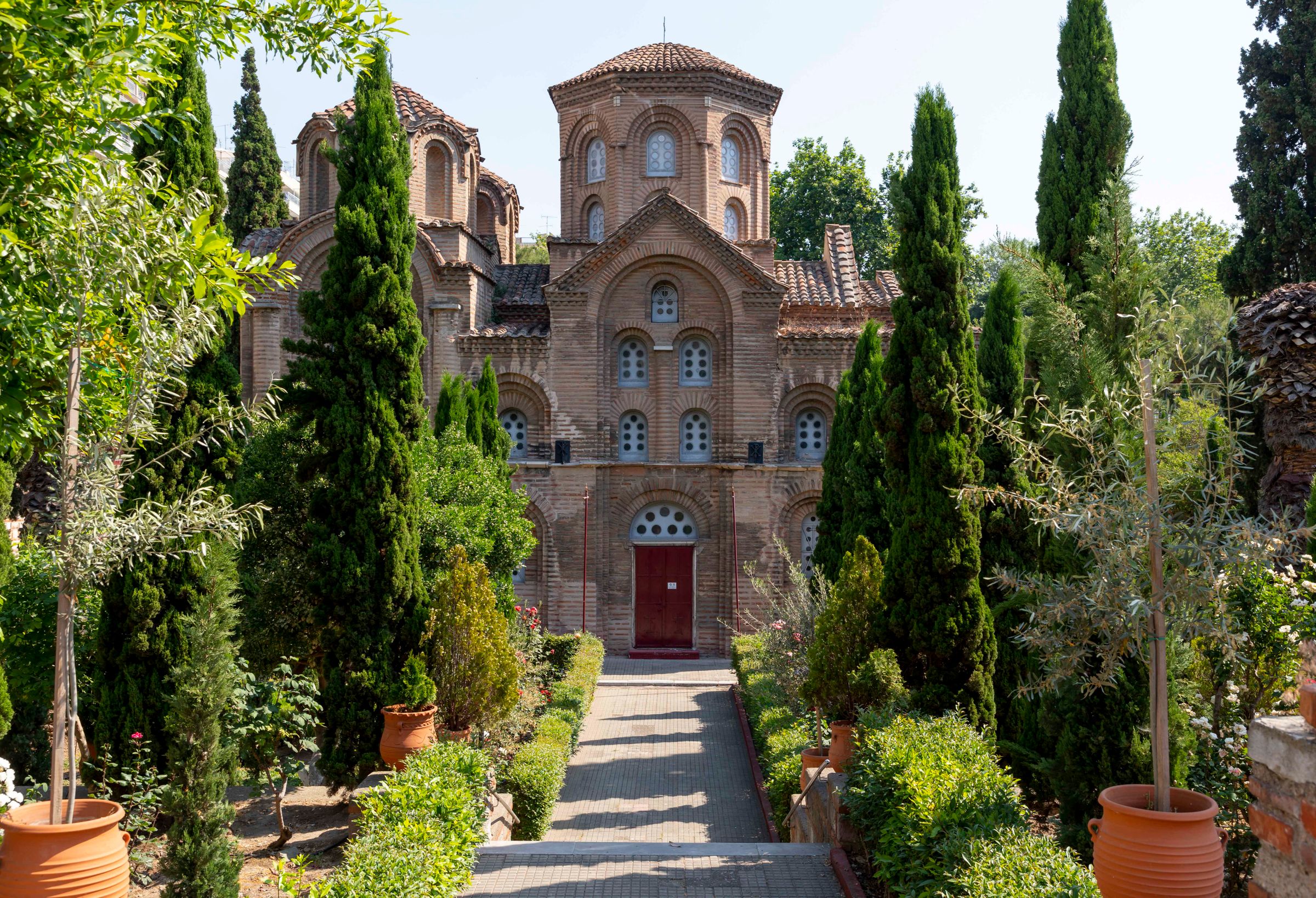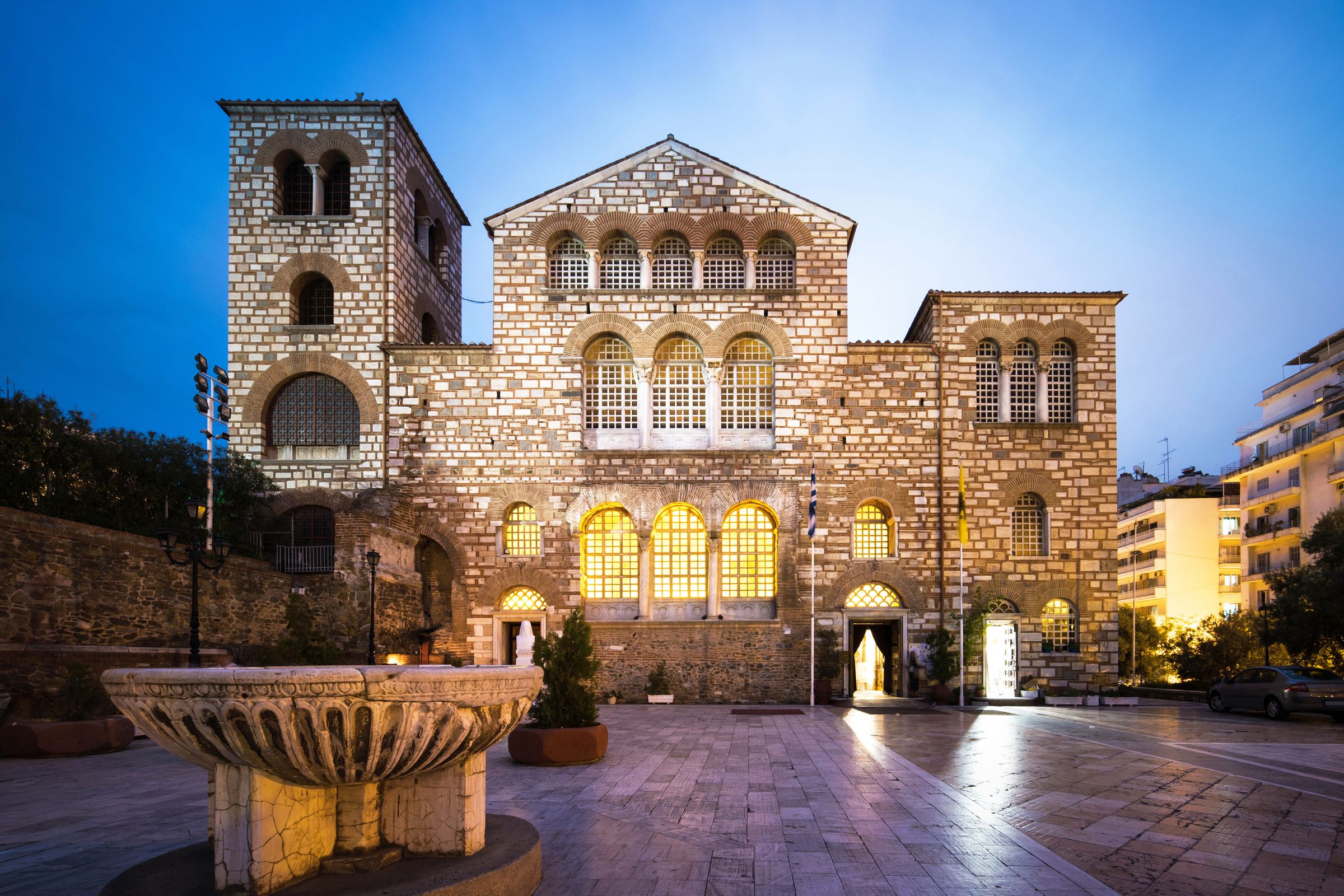
Panagia Halkeon
Panagia Halkeon
The Red Church of the 11th century
In the center of Thessaloniki, almost at the junction of Egnatia and Aristotelous streets, Panagia Halkeon stands impressive, with the reddish color of its bricks, for a thousand years. Built-in 1028 by the Protospatharios Christoforos, his wife Maria, and the children Nikiforos, Anna, and Katakali, as the founding inscription informs, it is today in very good condition and is a Byzantine masterpiece, part of the great Byzantine monuments of the city.
The name comes from the place where it was erected, in the central market of the time, where there were bronze workshops and copper shops, something that happens until modern times. During the Turkish occupation, the church was transformed into a mosque, retaining its toponymic name ("Kazanjilar mosque", the ie mosque of the Kazantzis / bronze).
The type of the church is cruciform inscribed with a dome, typical ecclesiastical architecture in the Byzantine era of the Macedonian dynasty. Its murals were created simultaneously with the construction but also in later years, some of which are preserved. It is also known as the "Red Church" for its exterior, full of arches and pilasters, while inside much of the decoration has been saved with carved marbles and frescoes.





